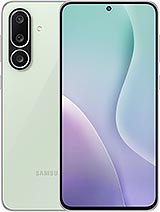Some Qualcomm chipsets support up to 192MP cameras
With the new wave of 48MP mobile camera sensors and devices like the Nokia 9 PureView and its five or even six, depending on how you count, snapper setup, it is pretty clear that the mobile industry is still actively experimenting and pushing camera boundaries. In keeping with this trend Qualcomm decided to be extra diligent with its ISP specs sheets.
The change, done without any real fanfare was first spotted by the guys over at XDA Developers, which frankly makes a lot of sense. Developers and tinkerers, especially those working on projects like ports of the Google Camera app and tech on non-Pixel devices are directly interested in detailed ISP specs and we can only imagine this is a welcome change.
![]()



Old specs: SD660 • SD670 • SD710 • SD845
The revised specs sheets now separate single and dual camera capabilities better and also list things like slow-motion recording limits and features like Hybrid Autofocus. Of course, one of the more stand-out details after the switch is the rather striking fact that apparently some recent Qualcomm chipsets support up to a 192MP single camera. The chips in question are the Snapdragon 855, 845, 710, 675 and 670.
This number does, however, start to make a lot more sense once you consider a few details. First off - that's a theoretical limit for a single camera the ISP can handle. That means that if you somehow manage to hook a 192MP snapper up to the chipset (of course, you would have to develop and manufacture one) you won't be able to attach any other camera. Not even a selfie. Also, in order to actually capture in this high of a resolution the ISP would have to turn off quite a few of its advanced features. Most notably that includes multi-frame noise reduction (MFNR). That's the process of taking multiple stills at the same time and then stacking them to reduce noise. Another thing that has to go is shutter lag. Without going into too much detail, shutter lag is basically a feature that allows quite a few stills (typically around 30) to reside in a buffer right as you launch your camera app. That reduces the capture time once you actually hit the shutter.




New specs: SD660 • SD670 • SD710 • SD845
Bottom line here being that while 192MP snaps could theoretically be achieved, you probably wouldn't want to in the first place. The main takeaway here should be an appreciation for Qualcomm's extra effort to publicly share technical details from their chips that would otherwise be confined to industry engineering circles.
Related
Reader comments
- Samath N8 808 owner
- 26 Mar 2019
- X$%
No need to make a 3D view, that would take too much time. I've read and I get your point from the text itself. But my design requires the camera to be on the BEZEL ONLY, not adjacent to display... Let me explain. I'll talk mathematically. S1...
- Moj
- 25 Mar 2019
- MH$
Let me give you some numbers so you can understand what i mean Let's imagine the phone thickness is about 7mm ok (we add another 1 mm for camera bump) Now it is about 8mm and we go by 7.5(given we can house the rotating mechanism in less than half ...
- Samath N8 808 owner
- 21 Mar 2019
- Dk}
We're talking about replacing 2 cameras with one. The space occupied by 2 cameras is more than my proposed camera's space. And motor would be below both sensor and lens, a very small motor, even a 0.1W brushless would do awesome. And there's n...








 Samsung
Samsung Xiaomi
Xiaomi Sony
Sony Samsung
Samsung Samsung
Samsung

